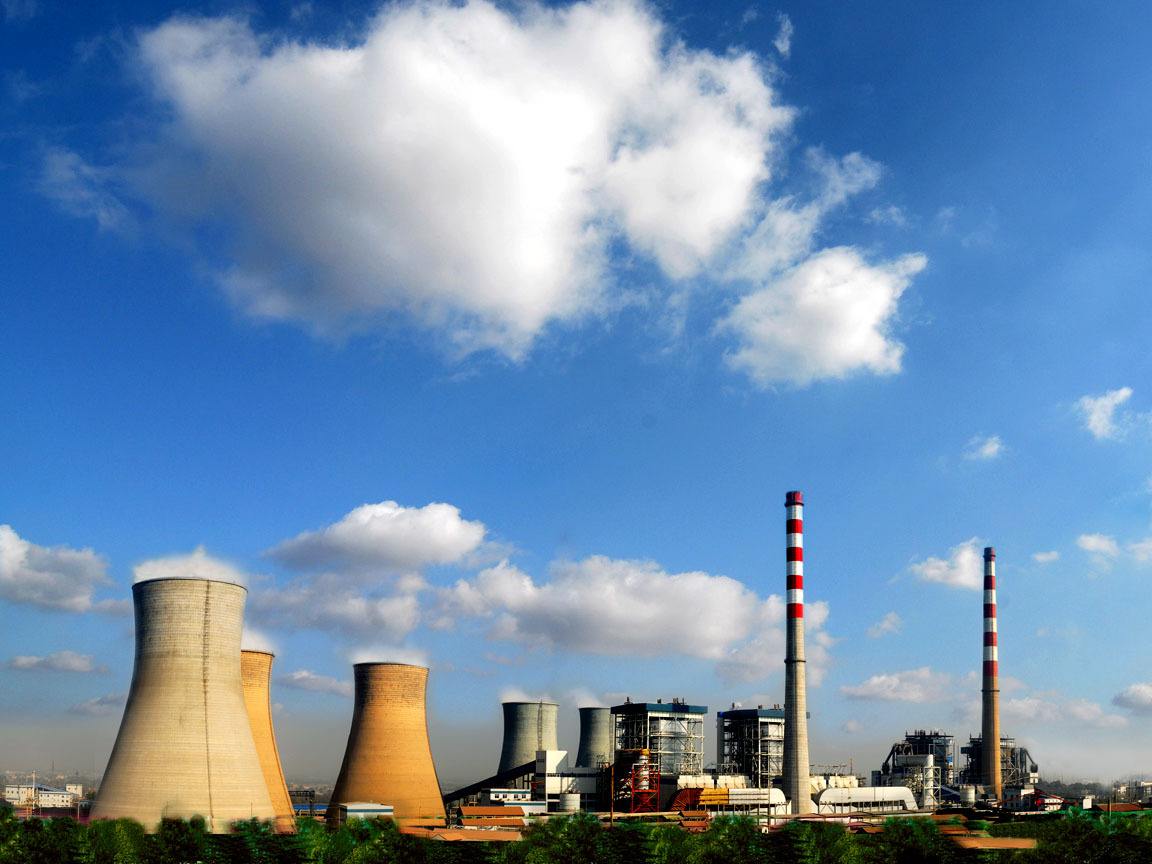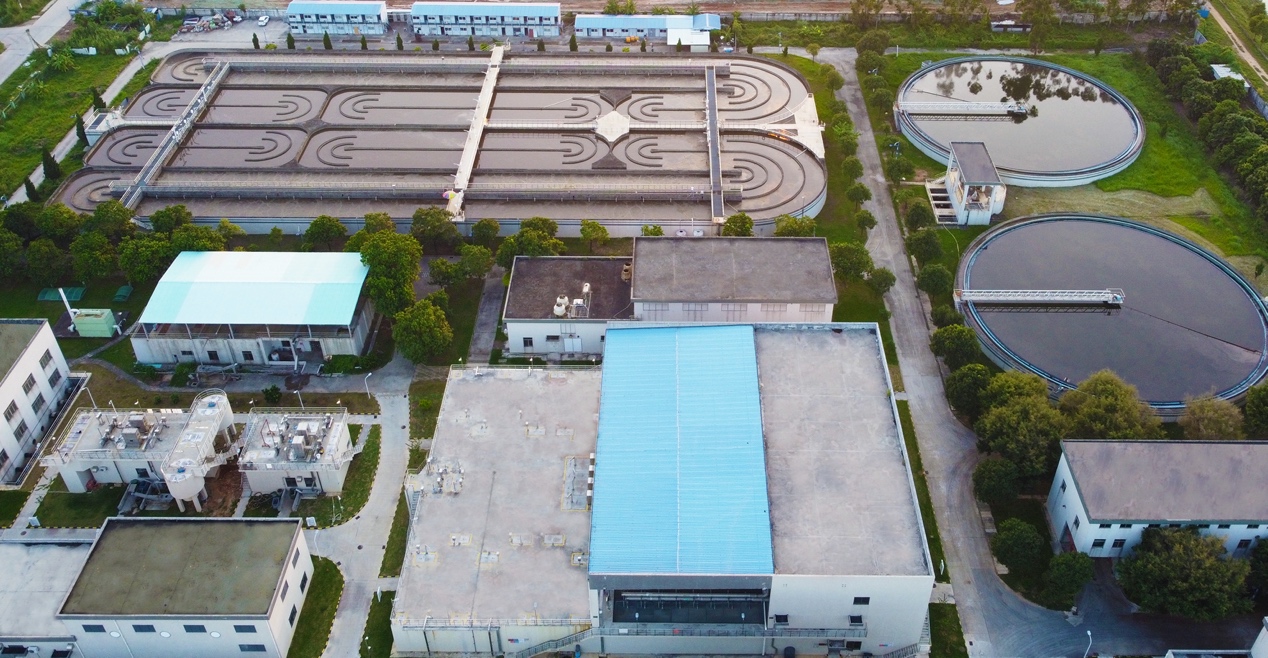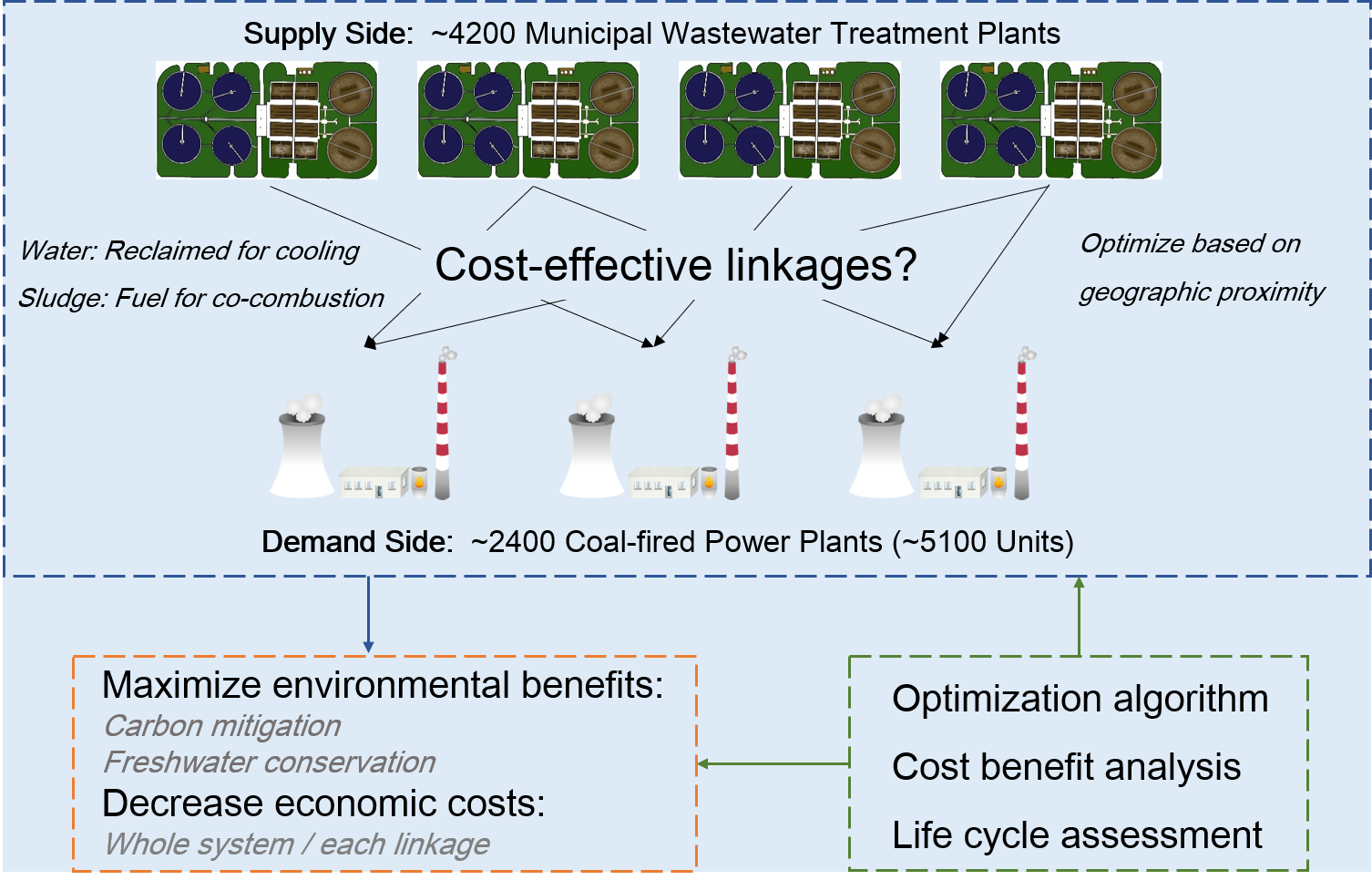A recent collaborative research team consisting of Professor Chen Lvjun’s group at Tsinghua University School of Environment and Professor Denise L. Mauzerall’s group at Princeton University has made new progress in the field of symbiotic benefits between coal-fired power plants and wastewater treatment facilities. In the policy context of synergies of pollution reduction and carbon mitigation, the team proposed that "infrastructure symbiosis" can further release the potential for environmental performance improvements in addition to independent optimization of existing infrastructure. The team exemplified the symbiotic strategies of coal power and wastewater treatment infrastructure in China to uncover comprehensive benefits in terms of carbon mitigation, freshwater conservation, and cost reductions.

Coal-Fired Power Plant

Wastewater Treatment Plant
China has national goals to peak carbon emissions before 2030 and to increase city-wide rates of reclaimed water use in water-scarce cities to 25% by 2025. CFPP-WWTP symbiosis can be implemented in the near term to facilitate the achievement of national carbon and water targets. Only 20% of total wastewater treated by WWTPs was reused in 2019, indicating enormous potential for additional water reuse before returning water to natural systems. Meanwhile, co-combustion of sludge with coal is a promising retrofit strategy for CFPPs that will reduce demand for coal and associated carbon emissions, which is highlighted in national policies. By 2019, sludge co-combustion had been tested in ~30 pilot projects in China.However, infrastructure symbiosis has not yet been adequately examined, as previous studies have primarily focused on separately optimizing a single category of infrastructure rather than symbiotically integrating various infrastructure types. This study analyses strategies for bridging the coal power and wastewater treatment sectors in China by using sludge and reclaimed water from municipal wastewater treatment as alternative fuels and water sources for coal power generation. This study used a geodatabase covering ~2400 coal-fired power plants and ~4200 municipal wastewater treatment plants and conducted an integrated analysis that optimized life-cycle greenhouse gas emissions and freshwater consumption as well as quantified economic benefits.

Research Framework
The authors found that infrastructure symbiosis in China annually offers GHG mitigation of 8.6 Mt CO2eq, equal to 29% and 0.28% of GHG emissions from the wastewater treatment and coal power sectors, respectively. The symbiosis annually conserves 3.0 billion m3 of freshwater, equal to 62% of freshwater consumption by the coal power sector, and provides annual cost savings of 3.4–12 billion CNY. Due to close proximities of CFPPs and WWTPs in Hebei, Shandong, Henan, Jiangsu, Zhejiang, Anhui and Guangdong provinces, we found that symbioses in these provinces contribute ~50% of total GHG mitigation and ~60% of total freshwater conservation and cost savings. Approximately 80% of carbon, water and economic benefits can be achieved via 32% and 44% of all the plant-level linkages for sludge co-combustion and water reuse, respectively.This study, “Benefits of infrastructure symbiosis between coal power and wastewater treatment”, was published Oct. 24 in Nature Sustainability. Yang Guo, a 2019 PhD alumnus from Tsinghua and currently Schmidt Science Fellow working with Prof. Mauzerall at Princeton, is the first author. Prof. Chen and Prof. Mauzerall are the co-corresponding authors. Additional authors include Prof. Jinping Tian, Yizheng Lyu (PhD student), and Wanqiu Hu (PhD alumna) from School of Environment, Tsinghua University.This study provides a methodological framework that is valuable guidance for policymakers aiming to develop sustainable infrastructure via coupling of the coal power and wastewater treatment sectors. Sludge co-combustion and reclaimed water use provide excellent opportunities to build symbiosis between the coal power and wastewater treatment sectors. WWTP–CFPP connections are beneficial to address waste treatment, freshwater conservation and carbon mitigation. Such connections will deliver substantial GHG mitigation and freshwater conservation and economic benefits. The results indicate that future urban planning should consider the proximity between CFPPs and WWTPs to maximize both environmental and economic benefits of infrastructure connections. detailed implementation plans for specific regions can be developed using our high-resolution results. Specific policies in China’s sub-regions (such as water-deficient provinces) can be incorporated to further balance environmental benefits with cost effectiveness and technical feasibility, thus providing practical solutions for infrastructure linkages. Policies to boost the establishment of the energy–water infrastructure symbiosis would cost effectively facilitate the achievement of China’s climate and water targets.
Professor Chen Lyujun’s group has been dedicated to industrial ecology theories and engineering interventions, and industrial park decarbonization, which have supported policymaking in Ministry of Ecology and Environment, Ministry of Commerce, Ministry of Science and Technology, Ministry of Industry and Information, etc. Professor Denise Mauzerall’s group has long-standing collaborations in China examining the co-benefits for air quality, public health, water, agriculture, and climate of clean air and carbon mitigation strategies. This study was financially supported by the National Natural Science Foundation of China, the Ma Huateng Foundation grant to Princeton University, and the Schmidt Science Fellows program in partnership with the Rhodes Trust.
Paper link: https://www.nature.com/articles/s41893-022-00963-z





